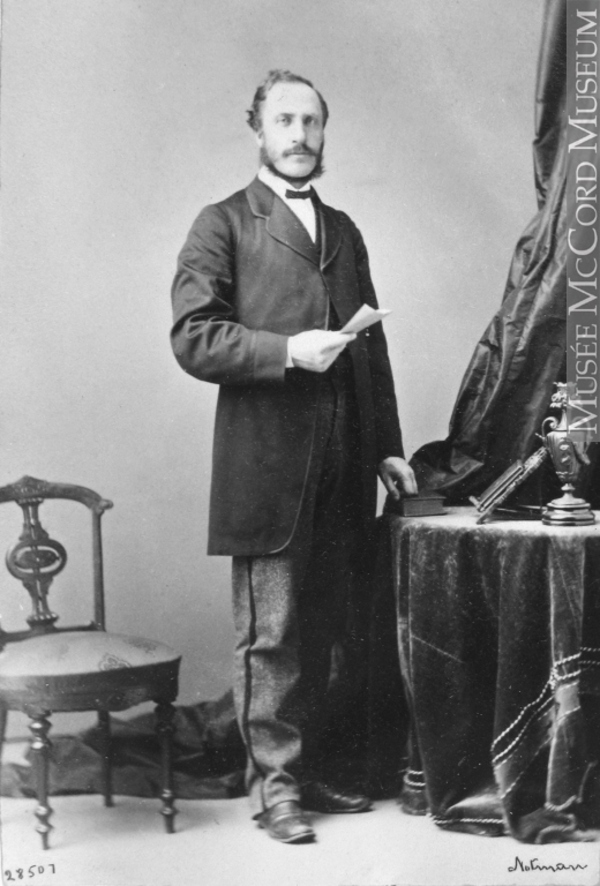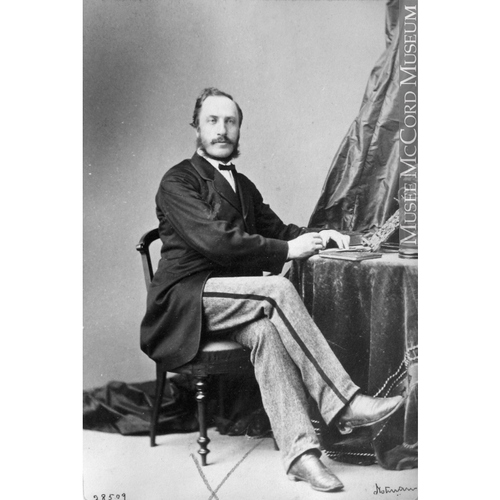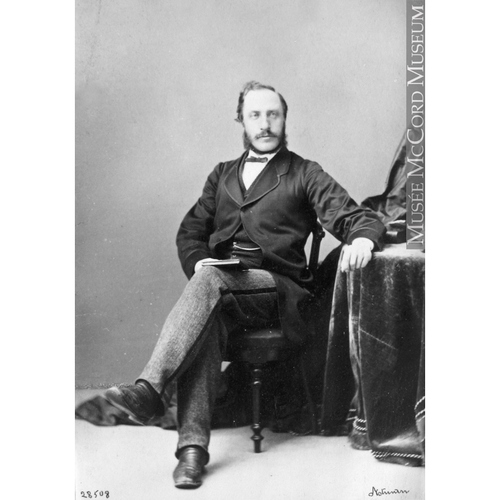
Source: Link
STUART, JOHN, merchant and office-holder; b. 26 Dec. 1813 in Greenock, Scotland, son of James Stuart and Wilhelmina Matilda Sinclair; m. 15 Feb. 1844 to Louisa Anna Bindon at St John’s, Nfld; d. 19 Dec. 1882 at St John’s.
John Stuart probably came to Newfoundland in the early 1830s to work as a clerk for his father, a partner in the Greenock-based firm of Rennie, Stuart and Company. This firm, which had been active in the Newfoundland fish trade since the 1790s, exported cod to Europe, imported provisions for sale to outport fishermen, and supplied vessels for the seal and whale fisheries. Stuart probably replaced his father as the company’s resident manager in St John’s when the latter retired to Scotland in the late 1830s.
Stuart was a prominent leader in the St John’s commercial community during the 1840s. Between 1842 and 1848 he was a major shareholder in 15 vessels newly registered in Newfoundland. He was a member of the St John’s Chamber of Commerce, a founder and director of the short-lived Newfoundland Bank in 1844, and a director of the St John’s Gas Light Company, which was also formed in 1844. The next year he was one of several merchants appointed at a public meeting to inquire into the best method of supplying water to St John’s. Stuart was also a spokesman for the small, but influential, Scottish community in St John’s. He served as a trustee of the Presbyterian St Andrew’s Church which opened 3 Dec. 1843, and he occupied several executive offices in the Newfoundland Scottish Society between 1839 and 1848. A Conservative in politics, Stuart was appointed to the Legislative Council in November 1845 by Governor Sir John Harvey* to placate the Scottish community, which wanted greater representation on the Executive and Legislative councils, and in the same year he was named by the government to the boards of directors of the St John’s Hospital and the St John’s Academy. Stuart was also a vice-president of the St John’s Turf Club in 1845 and a trustee of the Botanic Gardens in 1848.
Rennie, Stuart and Company experienced financial difficulties after its premises were destroyed in the St John’s fire on 9 June 1846. There followed the disastrous seal fishery of 1848, which affected all but the largest firms such as Bowring Brothers [see Charles R. Bowring], and Stuart declared the company bankrupt in October 1848. A month later he was appointed clerk to the House of Assembly by the governor, John Gaspard Le Marchant*. Like many bankrupt merchants he was able, through business and family connections, to start a new career as a civil servant.
Despite his previous Conservative politics, Stuart was to be non-partisan and respected by all politicians. This respect was clearly demonstrated when the Liberal government of John Kent* made him secretary to the Board of Works on 2 July 1858, an important position because the board was responsible for the management of all public buildings and roads in the colony. Stuart proved to be a thorough and conscientious secretary, but his efficiency was handicapped in the 1870s by a sharply increasing volume of work and the government’s tardiness in providing additional staff. Stuart remained secretary to the Board of Works and clerk to the House of Assembly until his death in 1882 following a long illness.
Cathedral of St John the Baptist (Anglican) (St John’s), Marriage registers, 1835–91 (mfm. at PANL). Maritime Hist. Group Arch., Board of Trade ser. 107–8 (entries for John Stuart). Nfld., Blue book, 1845–82; House of Assembly, Journal, 1832–82. Royal Gazette (St John’s), 1832–82. Business and general directory of Nfld., 1877. Lovell’s province of Newfoundland directory . . . (Montreal), 1871. The Newfoundland almanack . . . , comp. Philip Tocque (St John’s), 1848. Garfield Fizzard, “The Amalgamated Assembly of Newfoundland, 1841–1847” (ma thesis, Memorial Univ. of Newfoundland, St. John’s, 1963). Prowse, Hist. of Nfld. (1895).
Cite This Article
Melvin Baker, “STUART, JOHN (1813-82),” in Dictionary of Canadian Biography, vol. 11, University of Toronto/Université Laval, 2003–, accessed April 26, 2025, https://www.biographi.ca/en/bio/stuart_john_1813_82_11E.html.
The citation above shows the format for footnotes and endnotes according to the Chicago manual of style (16th edition). Information to be used in other citation formats:
| Permalink: | https://www.biographi.ca/en/bio/stuart_john_1813_82_11E.html |
| Author of Article: | Melvin Baker |
| Title of Article: | STUART, JOHN (1813-82) |
| Publication Name: | Dictionary of Canadian Biography, vol. 11 |
| Publisher: | University of Toronto/Université Laval |
| Year of revision: | 1982 |
| Access Date: | April 26, 2025 |





